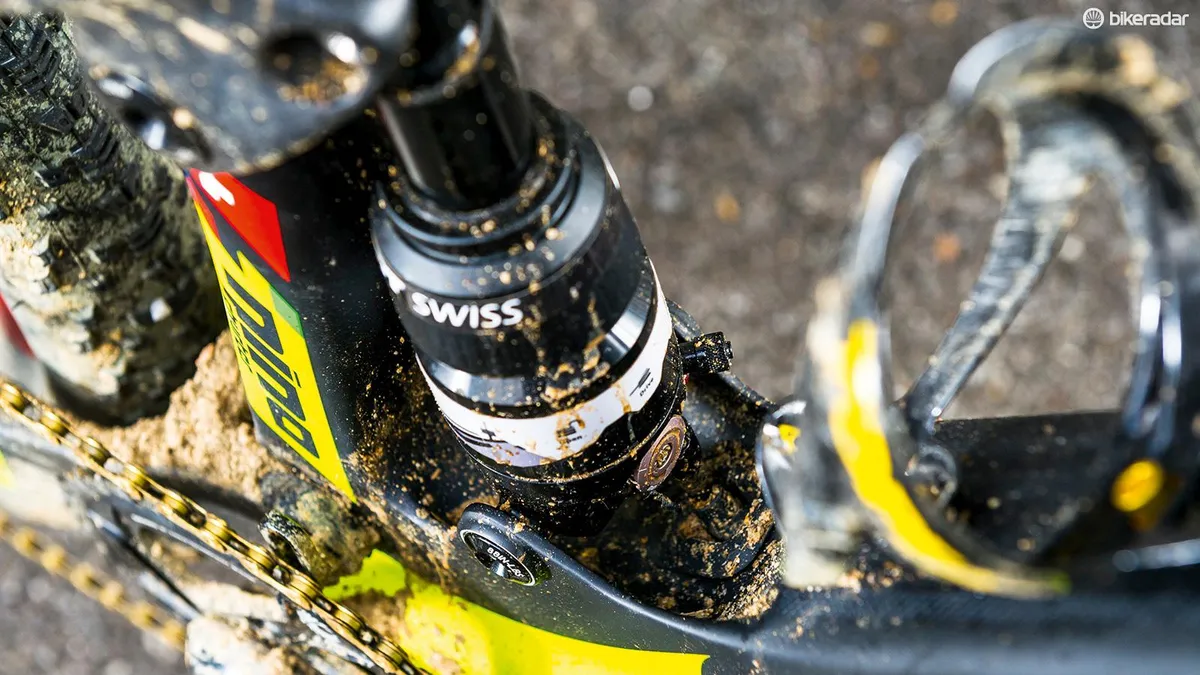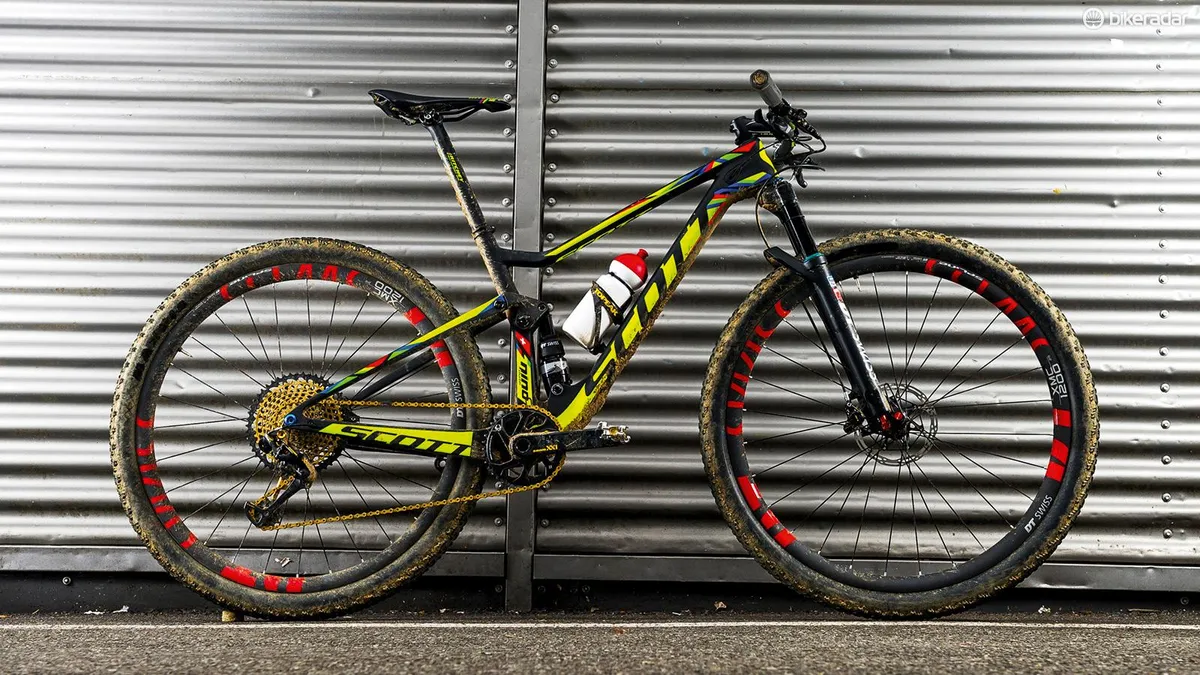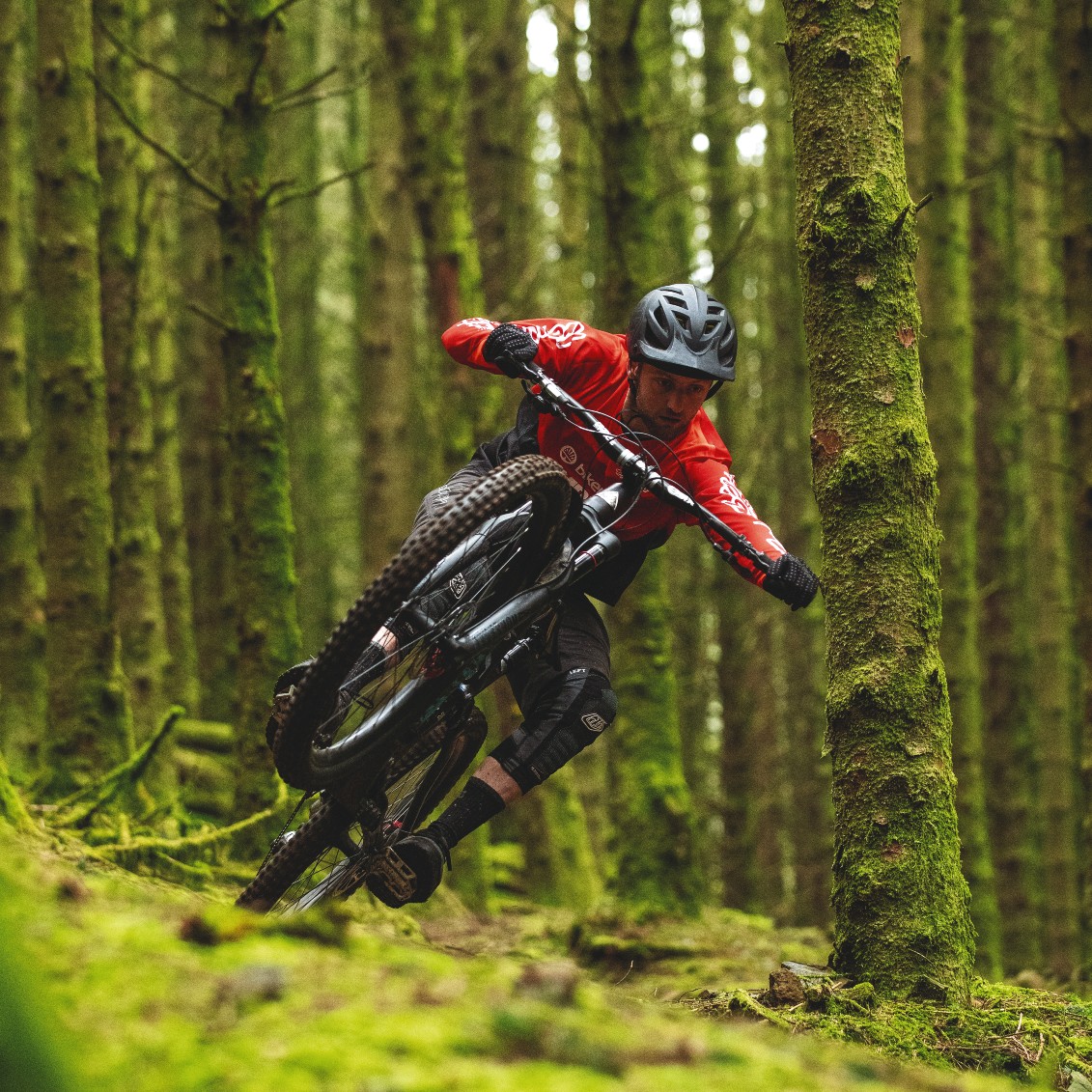On 21 August 2016, Swiss racer Nino Schurter crossed the finish line in Rio and threw up his hands in celebration. On the last lap of the men’s Olympic cross-country race, he’d stormed away from his main rival Jaroslav Kulhav@font-face { font-family: "Cambria Math"; }@font-face { font-family: "Calibri"; }p.MsoNormal, li.MsoNormal, div.MsoNormal { margin: 0cm 0cm 0.0001pt; font-size: 12pt; font-family: Calibri; }.MsoChpDefault { font-family: Calibri; }div.WordSection1 y to clinch the coveted gold medal. It must have been a sweet victory, not only for the five-time World Champion as he filled the gap in his trophy cabinet, but also for the Scott engineers, whose work on the new Spark had been focused largely on achieving success in Brazil.
The bike that crossed the finish line first was the product of three years of prototyping and testing by Nino and Scott. Despite the winning pedigree of the old Spark, the team identified various improvements that could be made. Their first job was to incorporate 29in wheels without compromising Nino’s really low cockpit set-up.
One of Nino’s requests for the new bike was improved pedalling stiffness
In the past, he’d found he could only achieve his optimal ride height with 650b wheels. Smaller hoops have a noticeable disadvantage when it comes to rolling speed though, and creating a bike that rolled as fast as possible was seen as critical for the hardpacked Olympic course. Nino’s existing set-up was used as the starting point for the geometry and by shortening the head tube, slackening the head angle and using drop-in bearings, almost 20mm was dropped off the stack height and the magic numbers were achieved.
Even with the changes, Nino ran a 90mm Ritchey stem flipped to give a 25-degree negative rise and a 680mm Ritchey Superlogic Carbon bar with five degrees of downsweep — an almost unridable set-up for most people.
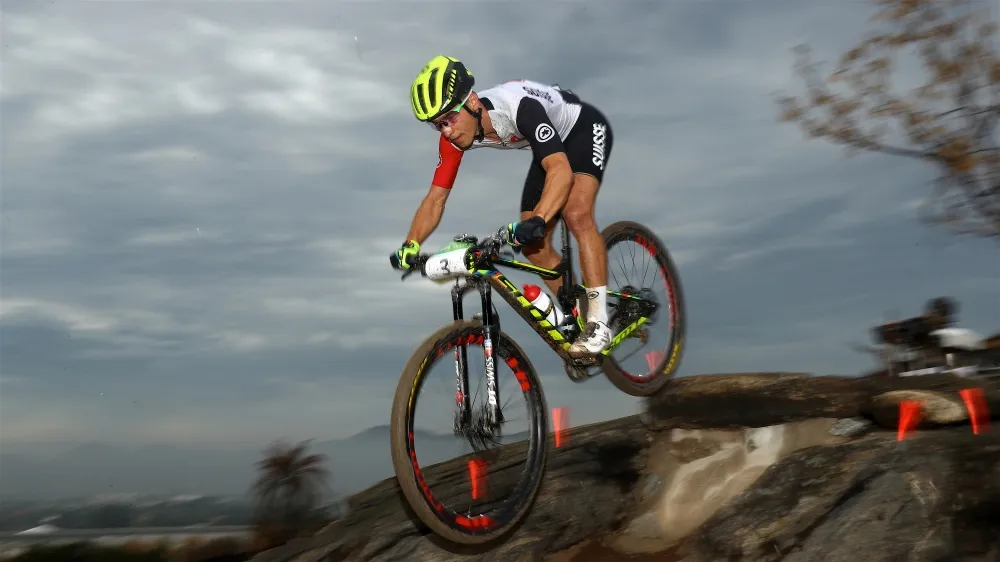
Shock move
One of Nino’s requests for the new bike was improved pedalling stiffness. Scott’s answer was to move the shock from under the top tube to a new vertical position above the bottom bracket (BB). This allowed them to slim down the top tube and bulk up the BB area, where torsional forces are highest. The result is a frame that’s both stiffer and lighter, and with a lower centre of gravity too. Making the Spark 1x-specific and using Boost hub spacing allowed the engineers to shorten the chainstays, again increasing stiffness.
Moving the shock also allowed Scott to refine the leverage curve. Nino likes his suspension to be active and, weighing a lean 67kg, runs his fork and shock fairly soft. A carbon DT Swiss OPM ODL Race fork gives 100mm of travel up front and a DT Swiss R414 shock offers three settings at the rear — locked out, 70mm and 100mm. Scott’s TwinLoc remote controls both fork and shock, and Nino will frequently switch modes during a race to give him the optimum balance of pedalling efficiency, climbing traction and downhill control.
Big gears
Harnessing the power of the Swiss man’s thighs is a SRAM XX1 Eagle 12-speed transmission. The 10-50t cassette allows Nino to run a big front chainring, giving him a better range of gears for putting the hammer down, while still leaving some easier climbing gears. Mind you, the gearing ain’t easy — in Rio he ran a 38t front ring, bigger than on many downhill bikes!
Another interesting adaptation for the Olympics was his switch from tubular tyres (super-light race rubber with a sewn-in inner tube that has to be glued onto the rim) to regular 2.3in Maxxis Aspen tubeless tyres on wide DT XMC 1200 rims — a set-up that, in testing, he’d found to be faster rolling.
Finishing off this Olympic machine is a one-off paint job drawn up by Scott’s graphic designers and painted in-house. The pattern and colours were inspired by Afro-Brazilian culture, and, of course, there’s a Swiss flag and Nino’s name on the seat tube. With all this effort put into his bike, there must have been enormous pressure to perform at the Olympics. Thankfully, Nino produced the goods and rode it to a stunning victory.
Why is it super?
- One-off Rio 2016 paint job and a gold medal to its name
- A unique set-up designed for one thing — going seriously fast and winning races
- The flagship model of the redesigned 2017 Scott Spark range
1. Bling rings
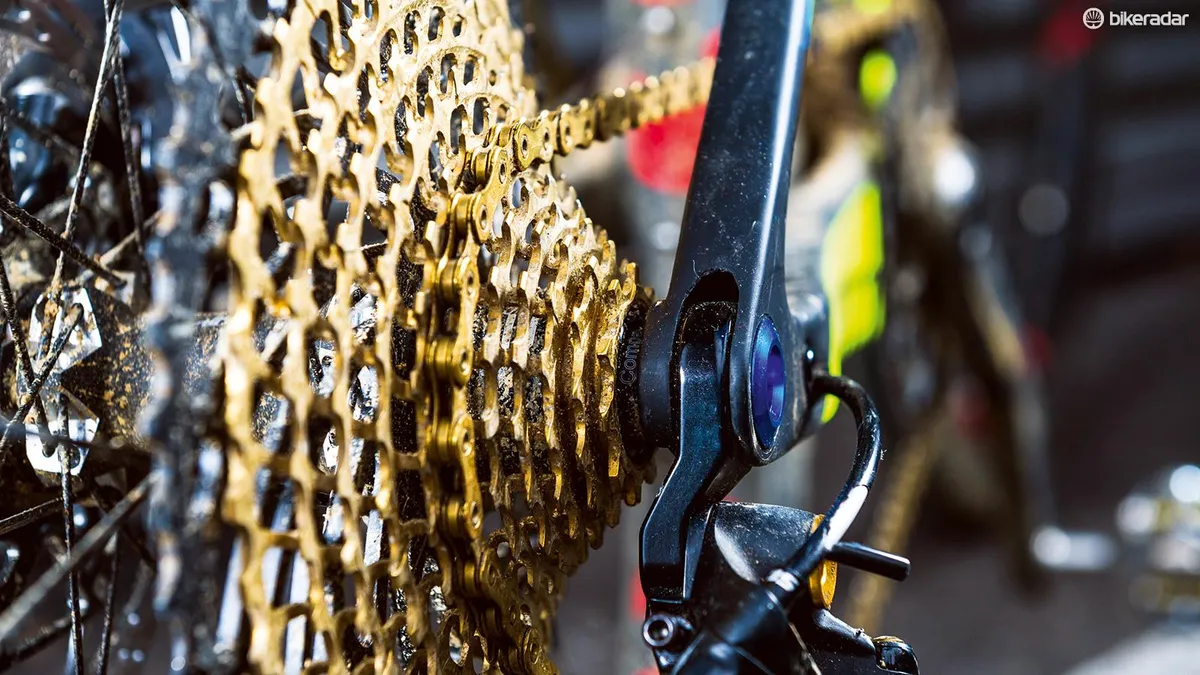
2. Bulked up
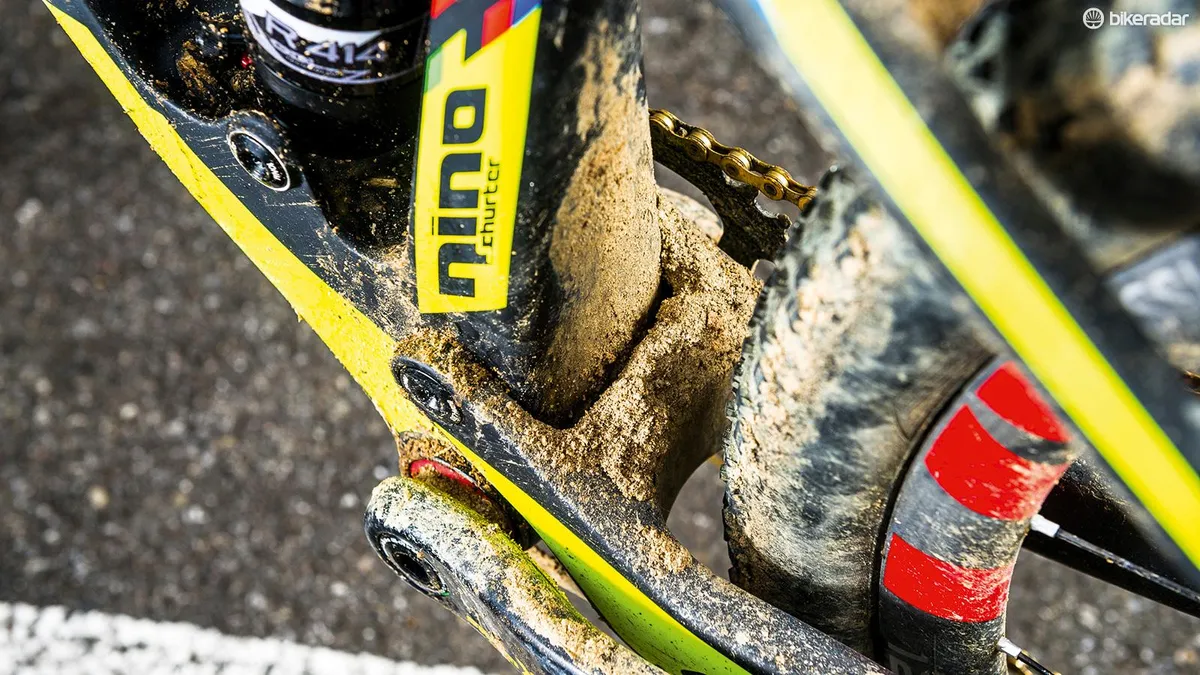
3. Anchored
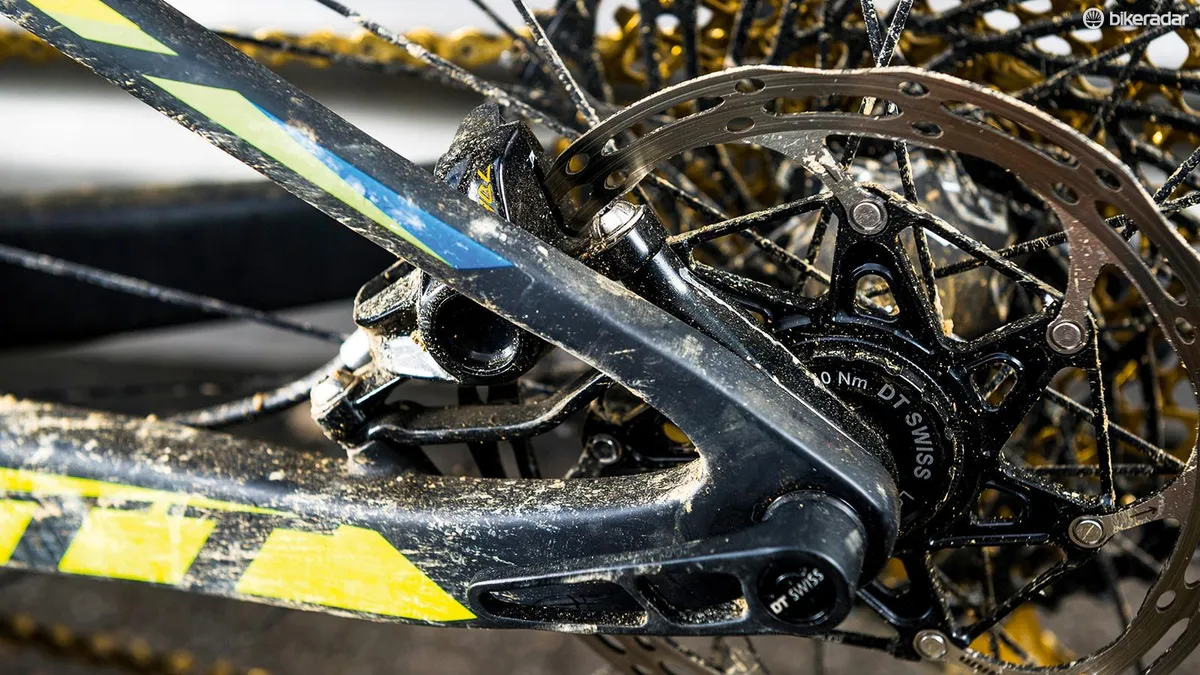
4. Slammed
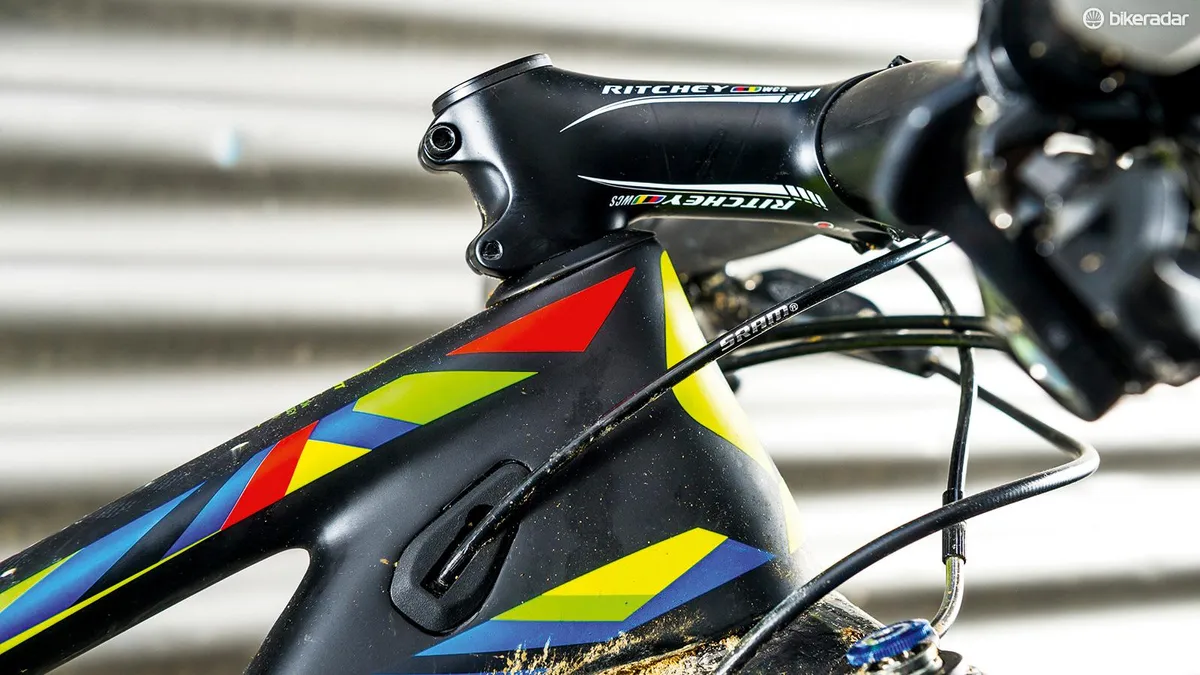
5. Low as can go
